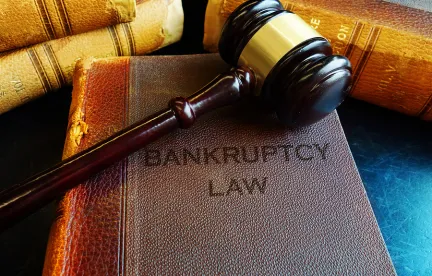Among the only certainties for the post-COVID lending world is the uncertainty of commercial real estate values. Among the classes of real estate that surely will be immediately diminished in value are hospitality and most brick and mortar retail, but even the value of industrial and office properties will be closely scrutinized as questions are posed regarding changes in how companies conduct their businesses and which types of businesses will recover most fully. Ignoring the obvious challenges faced by hotels, stores, movie theaters and restaurants, will office buildings ever re-fill with white collar workers after they have demonstrated an ability to work remotely? Which factories will spring back to full productivity, and how will the demand for work space change? And most fundamentally to real estate lenders and investors, what will happen to rental and sale values in the face of this uncertainty? These questions will have an immediate impact on the Chapter 11 process and will provide opportunities for business debtors to drastically reduce and modify liabilities secured by real estate. Real estate lenders in turn may have to resort to the often-misunderstood provisions of the Bankruptcy Code found in Section 1111(b) dealing with under-secured real estate loans.
REAL ESTATE VALUATION RISKS IN CHAPTER 11
Valuation of real estate assets is often the primary driver of the restructuring of commercial loans facing default and possible Chapter 11 bankruptcies. Valuation also is among the most hotly-contested issues in a Chapter 11, with experts battling endlessly over disparate opinions of value and the economic assumptions baked into those predictions and conclusions. The reason that valuation drives the process is that the Bankruptcy Code treats an under-secured real estate loan as essentially two claims, one being a secured claim to the extent of the current fair value of the property, as determined by the judge, and an unsecured claim in the amount of the shortfall (the deficiency) between the contractual debt and the collateral’s current value. By way of example, if the secured creditor’s real estate loan had an unpaid balance of $3 million as of the borrower’s Chapter 11 petition date, but the collateral has in fact declined in value to $2 million, Bankruptcy Code 506(a) provides that the creditor has an allowed secured claim of $2 million and a separate unsecured claim for $1 million.
The bifurcation of the single loan into two classes of claims has huge implications, since the secured claim of $2 million effectively has to be paid in full (over time, but with interest only on $2 million) while the $1 million unsecured claim may well result in an unpredictable and small recovery. The real estate lender, however, still has substantial leverage in the Chapter 11 process, since it now holds both a secured claim that must be paid in full and a large unsecured claim that also gives it a separate voice and vote on the Chapter 11 plan. In many single asset real estate cases, the lender with such a bifurcated claim essentially has a veto over any plan the borrower proposes if its deficiency claim represents over one-third of the total amount of unsecured claims.
But this bifurcation of the claim based on a current valuation of the real estate may result in substantial unfairness to the real estate lender if the property recovers some of its pre-COVID value, or even increases dramatically in value, over the period of repayment provided by the plan. Returning to the example, if the property returns to a stabilized value in excess of the original $3 million loan balance, the debtor may well decide to sell or refinance the property, pay the secured creditor only $2 million plus whatever interest was allowed and accrued under the plan, and then retain the upside.
HOW BANKRUPTCY CODE 1111(b) WORKS
This unfairness caused by temporary declines in value is addressed by the Bankruptcy Code in Section 1111, which suffers from confusing language but in plain English works as follows. Under Section 1111(b)(2), an under-secured creditor can elect to have its $3 million debt not split into a secured claim of $2 million and an unsecured claim of $1 million, but rather to have it treated as holding only a single, secured claim of $3 million. However, the $3 million figure is subject to a “present value” caveat: the debtor must only pay a stream of payments whose arithmetic total is $3 million but whose present value, based on an imputed discount created by a low, or no, interest accrual, is only $2 million. Thus, if the property does not materially increase in value, and the debtor simply makes the payments provided by the plan, the secured creditor only receives $2 million in value. But if the property materially increases in value, and the debtor elects to sell or refinance the property, it then must satisfy the lien by paying the secured creditor $3 million. Why would the debtor sell or refinance if it then had to pay a $3 million lien? For all of the usual reasons motivating a business, which may include capturing the value over $3 million or relocating to a more advantageous site.
This Section 1111(b) election by the real estate lender is not cost-free to that lender. First, it gives up its unsecured claim for $1 million, which may have economic value. It also gives up the leverage regarding plan terms afforded to a large unsecured creditor. Finally, assuming its unsecured claim is placed in the same class as other unsecured creditors, it might completely block confirmation by voting “no” on the plan, preventing the debtor from getting the affirmative vote of at least one class of impaired creditors, since “cramdown” of a plan requires that one class of creditors accept the plan. This election to be treated under Section 1111(b) must be made before the debtor’s disclosure statement is approved, so the secured creditor must make this strategic decision before any voting on the plan has commenced.
SPECIAL USE OF 1111(b) IN NEW SBRA CHAPTER 11 CASES
It should be noted that Section 1111(b) is even more important for cases under the new Small Business Reorganization Act (“SBRA”) provisions under the Code found in Sections 1181-1195. The recently enacted CARES Act increased to $7.5 million the amount of debt that a SBRA debtor may have to take advantage of the new legislation. Under the provisions of SBRA, many of the conventional creditor protections of Chapter 11 are gone, including the need for a creditors committee, the need for an approved disclosure statement, the need for an affirmative vote by at least one impaired class of creditors, and the need to satisfy the “Absolute Priority Rule” that essentially prevents shareholders or equity from retaining anything unless all creditors are paid in full. Under SBRA, which in many ways is based on Chapter 13 concepts, all of these creditor protections are replaced by the requirement that the debtor distribute to creditors all “disposable income” for 3-5 years after plan confirmation. Because the amount of “disposable income” of a struggling business is especially unpredictable in the post-COVID environment, an under-secured real estate lender may be more willing to give up its unsecured deficiency claim in exchange for the upside of Section 1111(b).
In short, the post-COVID environment is ripe for Chapter 11 cases in which claims secured by real estate can be adjusted downward based on current valuations of many classes of commercial properties. However, if the demand for most classes of property returns, and commercial property values increase from their current uncertain levels within the duration of the repayment period for the lender’s secured claim, Section 1111(b) allows the lender to retain the full amount of its lien and subsequently capture that full value upon a sale or refinancing of its collateral. This decision must be carefully made based upon both legal and economic considerations, but Section 1111(b) finds new importance based on today’s commercial property valuation uncertainties both in conventional Chapter 11 cases and the more challenging landscape created by the Small Business Reorganization Act.



 />i
/>i

